What is the Side Lunge Pose?
Skandasana, also known as the Side Lunge Pose is a dynamic yoga posture that targets the hips, legs, and core. In this asana, one leg is bent deeply at the knee while the other leg is extended out to the side, with the foot flexed. The torso leans over the bent leg, and hands can be placed on the floor for balance or in a prayer position at the heart. This pose helps to improve balance, flexibility, and strength in the lower body. Additionally, Skandasana opens the hips and groin area, enhances overall body coordination, and can be a preparatory pose for more advanced asanas. It is often included in sequences to cultivate agility and ease in the hips, making it beneficial for activities that require lower body mobility.
Position type: Squat
Posture type: Lunge
Ideal for: Flexibility and mobility
Targets: Hips, groin, inner thighs, core
Pose level: Beginner
How to prepare for Skandasana?
Skandasana itself is a preparatory posture that opens up the hips and groin region. However, a few helpful practices for Skandasana are as follows.
Hip-opening: Skandasana is a hip-opener that stretches the inner thighs, groin, and hamstrings. Start by practicing a few rounds of Surya Namaskar (Sun Salutations) to warm up the body and release tightness. Poses such as the Downward-Facing Dog, Standing Forward Fold, and Low Lunge are effective for loosening the hamstrings and inner thighs. You can practice the Garland Pose (Malasana) to deepen the hip stretch and enhance balance. Practicing the Bound Angle Pose (Baddha Konasana) and Pigeon Pose (Kapotasana) can also help to open the hips and groin area. These preparatory poses will improve blood circulation to the hip region, and help ease into the practice of Skandasana.
How to do Skandasana
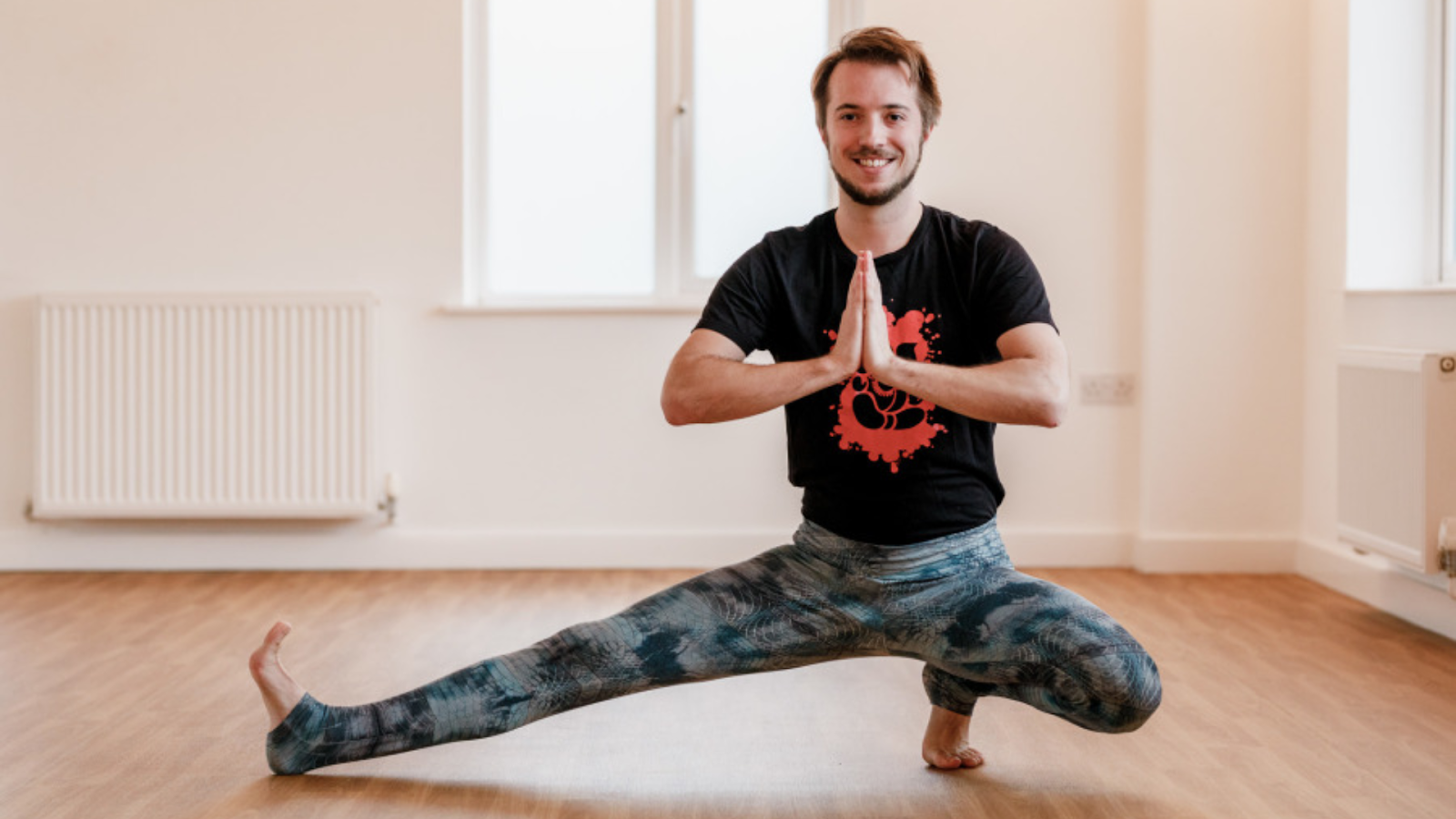
Getting into the posture:
- Stand with your feet wide apart, about 3-4 feet, and turn your toes slightly outwards.
- Shift your weight to one side, bending that knee deeply while keeping the other leg extended and straight.
- Flex the foot of the extended leg, keeping the heel on the ground and toes pointing upwards.
- As you bend the knee, lower your hips towards the ground. Your bent knee should be aligned over the ankle.
- Place your hands on the floor in front of you for support, or bring them to a prayer position at your chest (Anjali Mudra) for balance.
- Keep your core engaged to support your balance and protect your lower back.
- Maintain a long spine by extending through the crown of your head.
- Hold the pose for several breaths, feeling the stretch in your inner thighs, hips, and hamstrings.
Getting out of the posture:
- To come out of the pose, straighten the bent leg and shift your weight to the other side, repeating the process on the opposite leg.
Key Alignments in Skandasana: Keep the bent knee aligned over the ankle to avoid strain, and ensure the extended leg is straight with the foot flexed and toes pointing upwards. The hips should be level and the spine elongated, avoiding any rounding of the back. Engage the core to maintain balance and support the lower back, while keeping the chest open and shoulders relaxed.
What are the benefits of Skandasana?
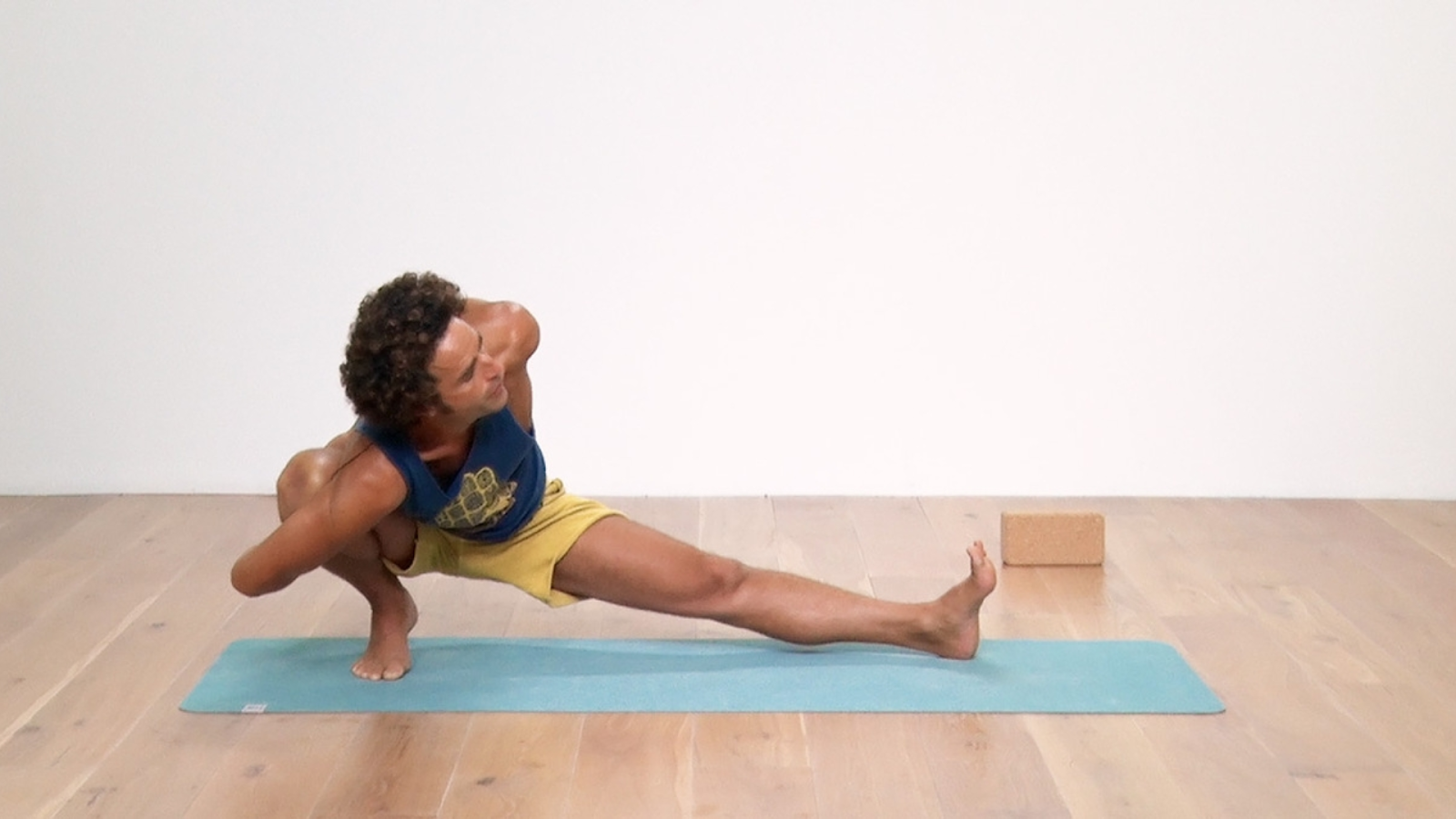
Skandasana deeply stretches the inner thighs, groin, and hamstrings, enhancing flexibility and mobility in the hips. This pose also strengthens the legs and core, improving overall stability and balance. By opening the hips, Skandasana can help alleviate tension and tightness, which is especially beneficial for those who sit for extended periods. Additionally, the pose encourages better circulation in the lower body, promoting detoxification and nourishment of the tissues. Practicing Skandasana can also increase body awareness and mindfulness, contributing to a sense of grounding and centeredness.
What are the contraindications of Skandasana? Individuals with knee injuries or pain should approach this pose with caution, as the deep bend can put strain on the joint. Those with hip or groin issues should avoid this pose or modify it to prevent aggravation. Lower back problems can also be a concern, so engaging the core and maintaining proper alignment is crucial. Pregnant women should avoid deep squats. If there are any existing ankle injuries, be mindful of the flexed foot in the extended leg. Always listen to your body and practice safely.
Counterposes of Skandasana Practice Downward-Facing Dog pose or Child’s Pose after doing Skandasana.
Variations of Skandasana
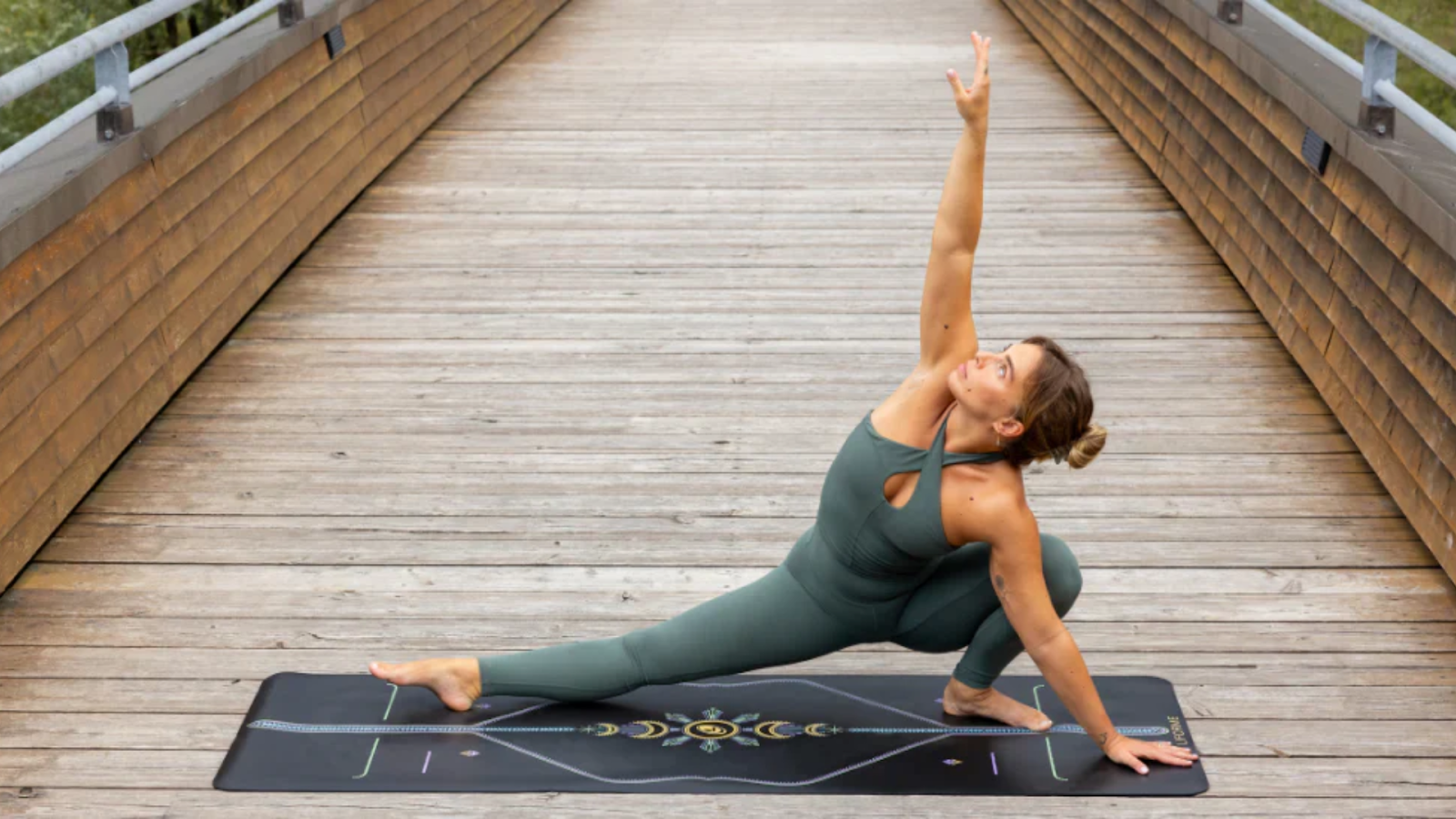
Easy variation:
- Place a yoga block under each hand for added support and stability. This variation reduces the strain on the hips and knees, making it easier to maintain balance and proper alignment. It is ideal for beginners or those with limited flexibility, allowing them to gradually deepen the stretch.
- Half Skandasana: Instead of fully extending one leg, keep both legs slightly bent and wider than hip-width apart. Shift your weight side to side, bending one knee while keeping the other leg slightly bent and active. This variation reduces the intensity of the stretch and provides a gentler approach to opening the hips and inner thighs, making it more accessible for those with tight muscles or joint issues.
Advanced variation:
- Skandasana with a Twist: From the original Skandasana position, place one hand on the floor for support and reach the opposite arm towards the sky, creating a twist in the spine. This variation adds a spinal twist, enhancing the stretch through the torso and improving flexibility in the upper body. It challenges balance and coordination while deepening the hip and groin stretch.
Advice for Beginners: It is best to start with a wide stance and keep your movements slow and controlled to avoid straining the muscles. Use yoga blocks under your hands for added stability and support as you lower your hips. Focus on maintaining proper alignment by keeping the bent knee over the ankle and the extended leg active with the foot flexed. Engage your core to support your lower back and avoid collapsing the chest. Remember to listen to your body and only go as deep into the pose as feels comfortable, gradually increasing your flexibility over time.
Shvasa tips:
- Ensure you warm-up before going into a deep squat. Begin with exercises to prepare your hips, thighs, and lower back.
- Keep your focus on alignment. Pay attention to alignment cues such as keeping the bent knee aligned over the ankle, maintaining a long spine, and engaging the core. Keep your extended leg active and engaged, and avoid collapsing the chest or rounding the back.
- Deep, steady breathing helps you relax into the pose and enhances your body's ability to stretch.
Learn how to practice the Skandasana the right way, with modification and props, from an experienced teacher LIVE on Shvasa.
Meta Description: How to do side squats or Skandasana with step-by-step instructions, benefits, contraindications and modifications.
Summary: Skandasana is a dynamic yoga posture that targets the hips, legs, and core. In this asana, one leg is bent deeply at the knee while the other leg is extended out to the side, with the foot flexed. Learn how to practice LIVE on Shvasa. FAQs:
- What is the Side Lunge Pose?
Skandasana, also known as the Side Lunge Pose is a dynamic yoga posture that targets the hips, legs, and core. This pose helps to improve balance, flexibility, and strength in the lower body. Additionally, Skandasana opens the hips and groin area, enhances overall body coordination, and can be a preparatory pose for more advanced asanas. It is often included in sequences to cultivate agility and ease in the hips, making it beneficial for activities that require lower body mobility.
- How to do Skandasana?
- Stand with your feet wide apart, about 3-4 feet, and turn your toes slightly outwards.
- Shift your weight to one side, bending that knee deeply while keeping the other leg extended and straight.
- Flex the foot of the extended leg, keeping the heel on the ground and toes pointing upwards.
- As you bend the knee, lower your hips towards the ground. Your bent knee should be aligned over the ankle.
- Place your hands on the floor in front of you for support, or bring them to a prayer position at your chest (Anjali Mudra) for balance.
- Keep your core engaged to support your balance and protect your lower back.
- Maintain a long spine by extending through the crown of your head.
- Hold the pose for several breaths, feeling the stretch in your inner thighs, hips, and hamstrings.
- To come out of the pose, straighten the bent leg and shift your weight to the other side, repeating the process on the opposite leg.
- What are the benefits of Skandasana?
Skandasana deeply stretches the inner thighs, groin, and hamstrings, enhancing flexibility and mobility in the hips. This pose also strengthens the legs and core, improving overall stability and balance. By opening the hips, Skandasana can help alleviate tension and tightness, which is especially beneficial for those who sit for extended periods. Additionally, the pose encourages better circulation in the lower body, promoting detoxification and nourishment of the tissues. Practicing Skandasana can also increase body awareness and mindfulness, contributing to a sense of grounding and centeredness.
- What are the contraindications of Skandasana?
Individuals with knee injuries or pain should approach this pose with caution, as the deep bend can put strain on the joint. Those with hip or groin issues should avoid this pose or modify it to prevent aggravation. Lower back problems can also be a concern, so engaging the core and maintaining proper alignment is crucial. Pregnant women should avoid deep squats. If there are any existing ankle injuries, be mindful of the flexed foot in the extended leg. Always listen to your body and practice safely.











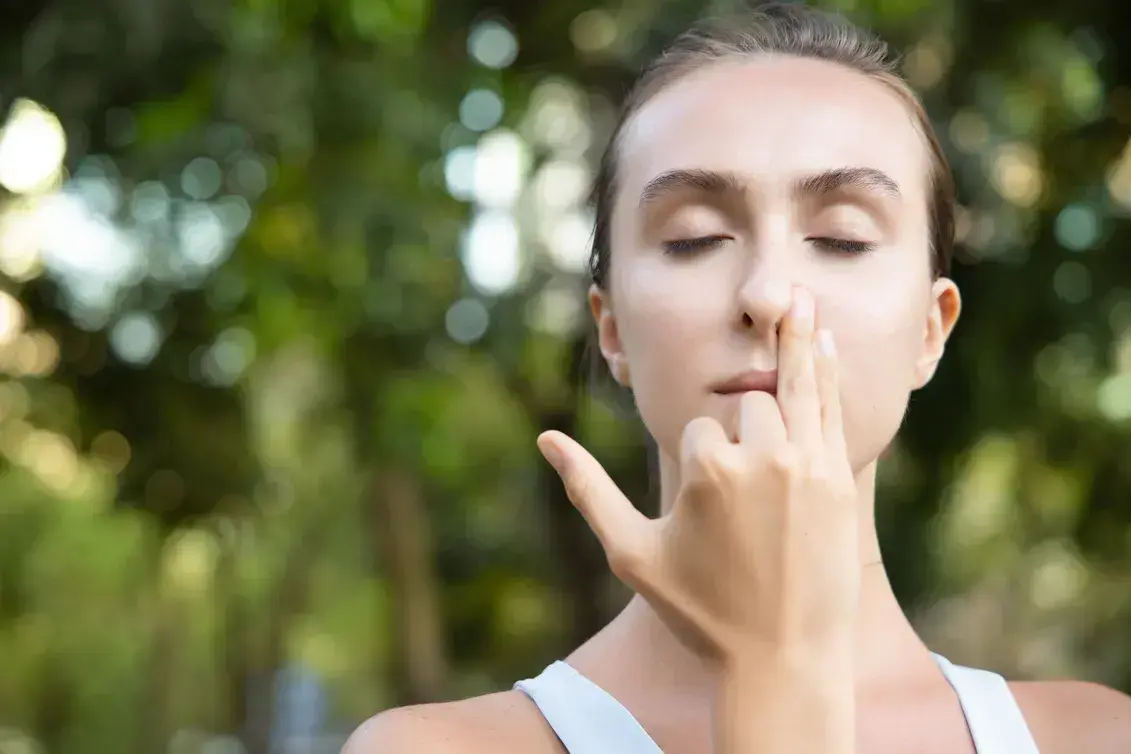



.jpg)
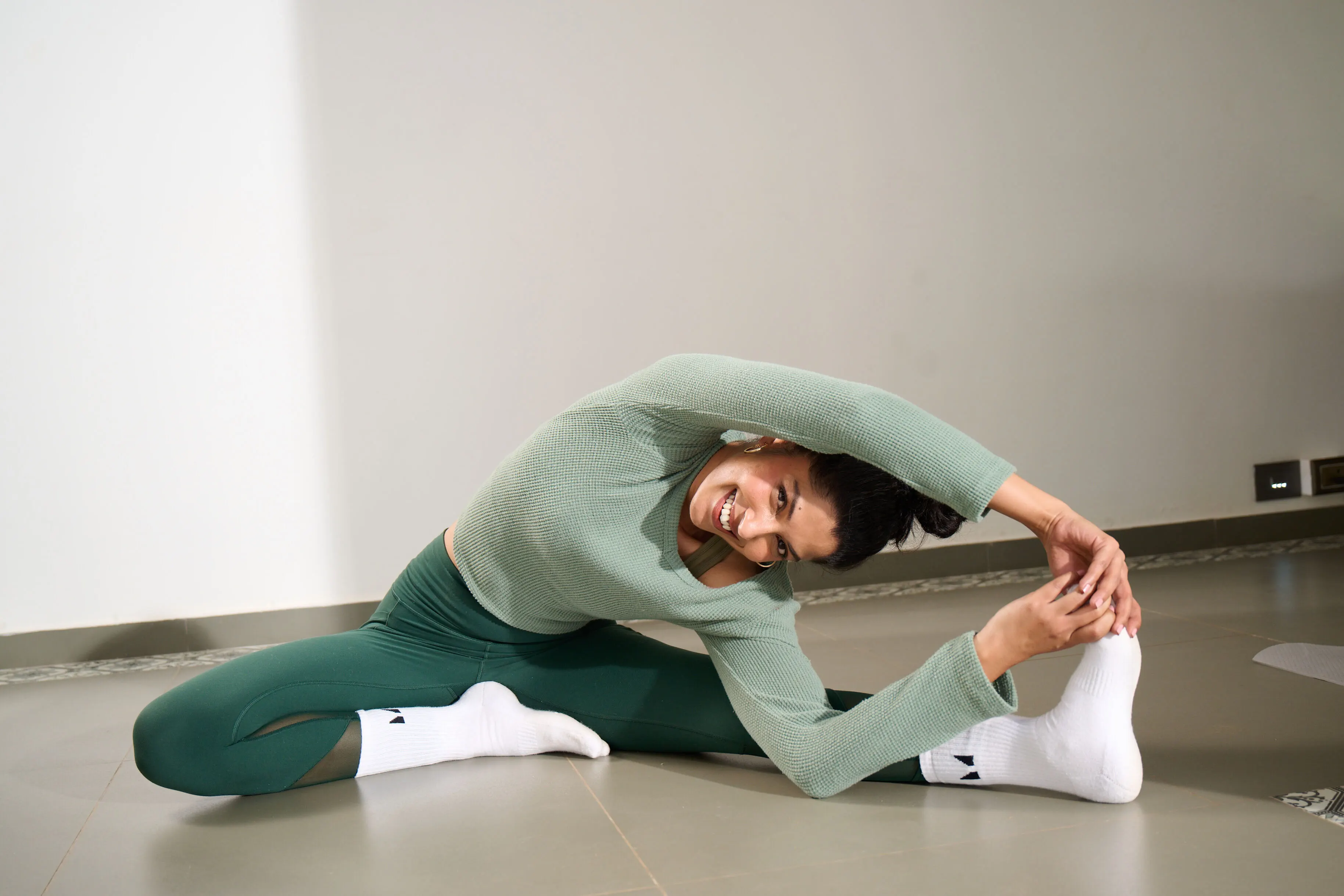










%201.png)

%201.svg)






%201.svg)